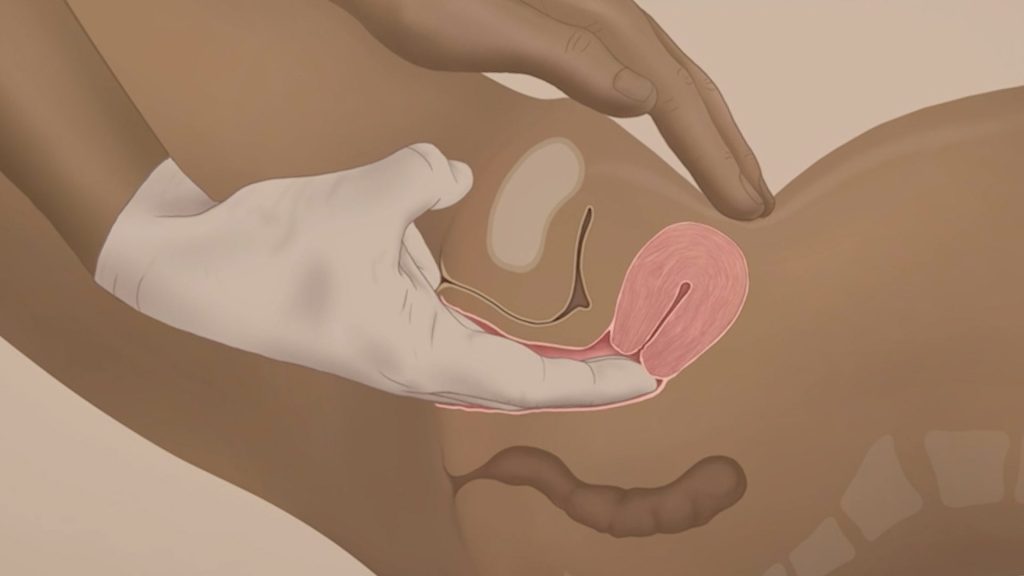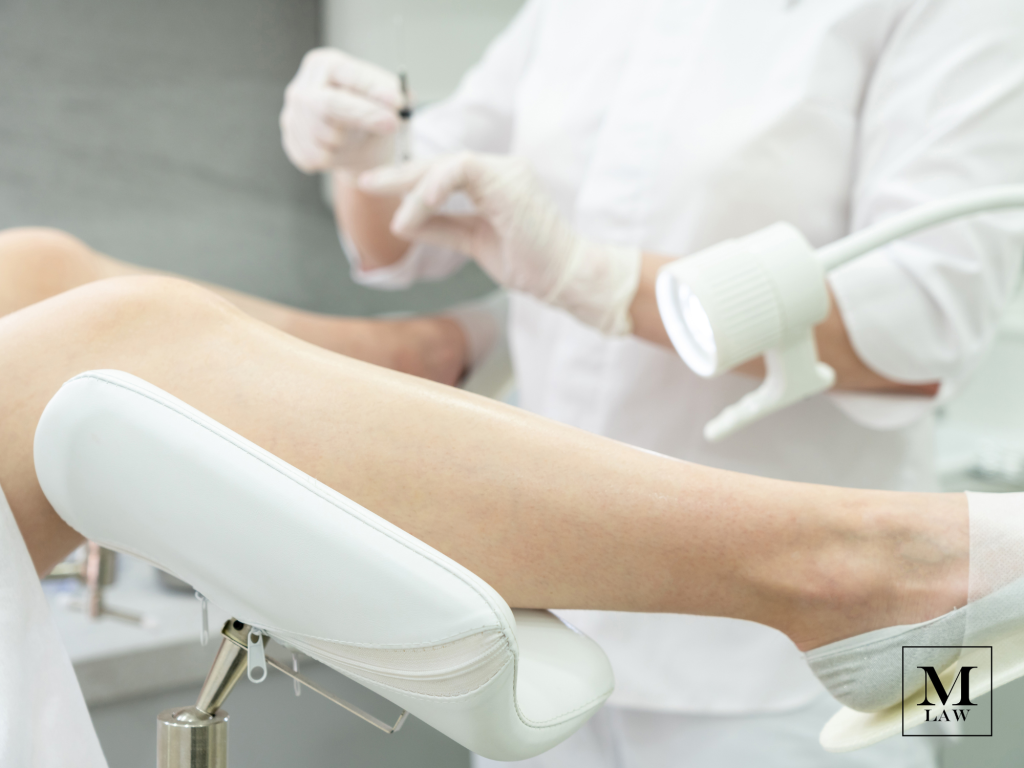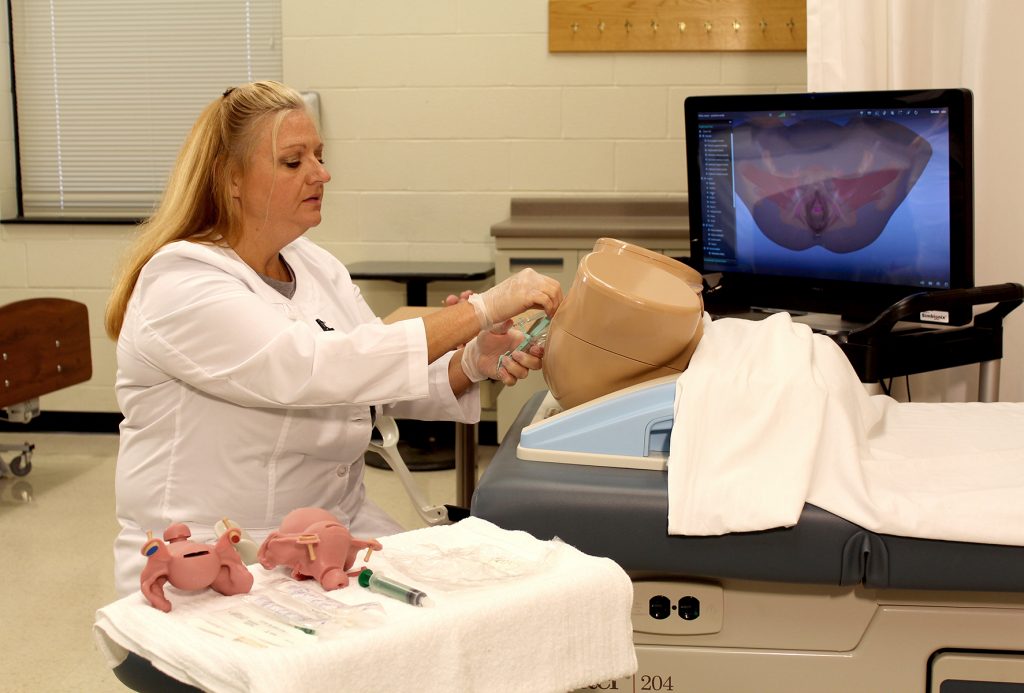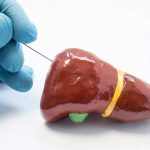
This is an internal examination under general anaesthetic  . An examination under general anaesthetic is also called an EUA.
. An examination under general anaesthetic is also called an EUA.
The examination includes checking your:
- cervix, vagina and vulva
- womb
- bladder
- anus and rectum (back passage)
Your doctor (gynaecological oncologist) can take samples of tissue (biopsies) during the test if necessary.
Why you might have a pelvic examination under anaesthetic
You might have this examination to check for signs of cancer. It can help your doctor diagnose a number of cancers such as:
Preparing for a pelvic examination under anaesthetic
Your doctor checks that you are fit and well enough for a general anaesthetic. Let them know if you:
- are taking blood thinning medication
- have a condition that affects your blood
Having a general anaesthetic means that you won’t be able to eat or drink for several hours beforehand. You usually stop eating at least 6 hours before the procedure. You can usually drink water up to 2 hours beforehand. Your appointment letter will give you instructions about this.
You may need an empty bowel so your doctor can check the inside of your rectum. Your doctor or nurse may give you an enema  to clear your bowel before the test.
to clear your bowel before the test.
You usually need to remove any jewellery below the waist, such as a belly button or vaginal piercing at home.

What happens?
You have an anaesthetic so that you can’t feel anything during the operation. You have this in the anaesthetic room, next to the operating theatre.
All the doctors and nurses wear theatre gowns, hats and masks. This reduces your chance of getting an infection.
The anaesthetist puts a small tube (cannula) into a vein in your arm. You have any fluids and medicines you need through the cannula, including the general anaesthetic. This sends you into a deep sleep. When you wake up, the procedure will be over.
During the general anaesthetic, while you are asleep, your doctor puts a speculum  into your vagina to keep it open. They check your cervix and vagina for signs of cancer.
into your vagina to keep it open. They check your cervix and vagina for signs of cancer.
They pass a slim telescope, called a hysteroscope, through your cervix into the womb. They then put some fluid or gas through the hysteroscope to slightly inflate your womb. This makes it easier for them to see inside and carefully examine your womb.
To check your bladder, they put a thin tube with a light and camera attached (called a cystoscope) into your urethra. The urethra is the tube that drains urine out of your body from the bladder. They fill the bladder with fluid and carefully check the bladder lining.
To check the inside of your rectum, your doctor uses their gloved finger to feel for any growths. Or they use a proctoscope or sigmoidoscope to look inside your bowel.
Your doctor takes biopsies of any abnormal areas. They send these to the lab to check for cancer cells.

After your examination
Once you’re awake from the anaesthetic, you go to the ward to recover. Your doctor will tell you if they have taken any biopsies.
You might have some mild pain after the test. Let your nurse know if you have any pain. They can give you painkillers.
You need to be in hospital for at least a few hours after a general anaesthetic. You usually go home the same day. You can’t drive yourself home after an anaesthetic. So you need someone to take you home and stay with you overnight.
You might have some light vaginal bleeding or spotting for a few days after a biopsy. Avoid using tampons during this time to reduce the risk of infection.
Possible risks
A pelvic examination under general anaesthetic is a safe procedure. Your nurse will tell you who to contact if you have any problems after your test. Your doctor makes sure the benefits of this examination outweigh any possible risks.
Infection
There is a risk of getting an infection in your pelvis or bladder, or your chest (from the general anaesthetic). Your doctor will give you antibiotics if this happens.
Bleeding
There is a small risk of heavy bleeding after this test. In severe cases, you might need a blood transfusion or an operation.
Damage to your bladder or womb
During the test, there is a small risk of injury to the bladder or womb. If this happens, you might need another operation.

Let your doctor or GP know if you have any heavy bleeding or the bleeding doesn’t seem to be getting better. Or if you have vaginal discharge that smells, or a high temperature (fever).
Getting your results
You should get your results within 1 or 2 weeks. You normally get them at your next clinic appointment.
Waiting for test results can be worrying. You might have contact details for a specialist cancer nurse. You can get in touch with them for information and support if you need to. It may help to talk to a close friend or relative about how you feel.



